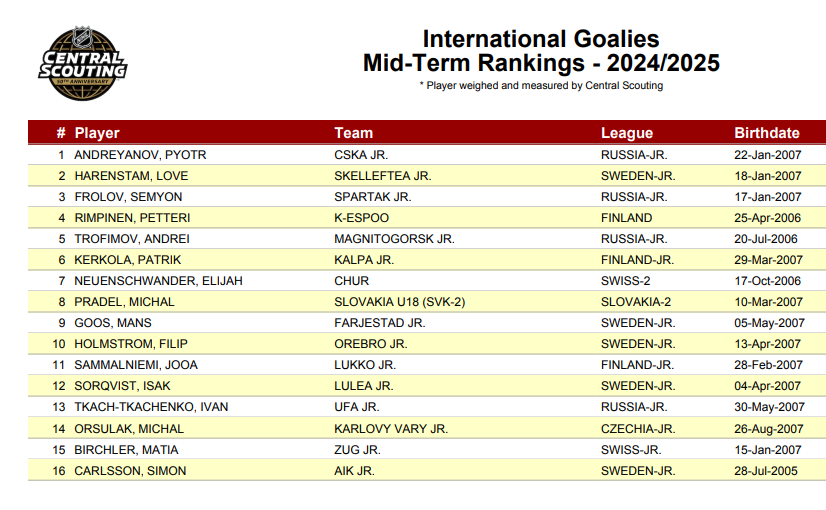The 2025 NHL Scouting Combine returned to Buffalo on Saturday, providing all 32 NHL teams with a final opportunity to evaluate the current group of aspiring big-leaguers before the 2025 NHL Draft in Los Angeles.
The combine`s primary focus is fitness testing, although teams also hold individual meetings with the prospects.
Here is a list of each drill the prospects participated in, along with a brief explanation. Images showing the top 10 results for each test are included below the description.
Combine Drills and Top Performers
Grip Strength
In this test, the athlete adjusts a hand grip dynamometer to fit their hand, fully extends their arm, and squeezes the device as forcefully as possible. The test is administered for both the left and right hands.

Results measured: Left Hand Grip (lbs.), Right Hand Grip (lbs.)


Aerobic Fitness (VO2 Max)
This assessment measures the athletes` aerobic capacity – the efficiency of their cardiovascular and respiratory systems in supplying oxygen to muscles. It involves determining the volume of oxygen utilized during maximal exercise through analysis of expired air.

Results measured: VO2 Max (ml/kg/min)

Wingspan
To measure wingspan, the athlete extends their arms straight out to the sides. The measurement is taken from the tip of the middle finger on one hand to the tip of the middle finger on the other, rounded to the nearest quarter inch.

Results measured: Wingspan (Inches)

Standing Long Jump
The athlete stands with feet slightly apart and toes behind a designated line. Using an arm swing for momentum, the athlete jumps forward horizontally as far as possible from a standstill.

Results measured: Horizontal Jump (inches)

Jump Station (AccuPower Dual Force Plate System)
This station uses an AccuPower Dual Force Plate system to precisely measure the 3D forces athletes generate during movements relevant to hockey. The system captures synchronized video to analyze movement efficiency, performance, and potential injury risk. Two types of jumps are performed: Vertical Jump (with arm swing) and No Arm Jump (with hands on hips). For each jump type, the best height out of three maximum-effort attempts is recorded.

Results measured: Vertical Jump (inches), No Arm Jump (inches)


Bench Press
Using a standard bench press, athletes lift 50 percent of their body weight. Starting with arms fully extended and a shoulder-width grip, the bar is lowered to the chest and then pushed up as quickly as possible. Players perform three reps for maximum velocity and power, with a pause between each rep. A device measures bar velocity and power output.

Results measured: 50 per cent of Body Weight (Power – watts/kg)

Pro Agility Test
This test, also known as the 5-10-5 yard shuttle (or 15-30-15 feet), assesses multi-directional speed, agility, reaction, and body control. Each player completes one sequence starting by moving to the right and another sequence starting by moving to the left.

Results measured: Pro Agility Left (sec), Pro Agility Right (sec)


Pull-Ups
This drill measures upper body relative strength and endurance. Athletes perform as many consecutive pull-ups as they can while maintaining correct form and technique.

Results measured: Pull-Ups Consecutive (max #)

Wingate Cycle Ergometer Test
The Wingate test is a measure of anaerobic power and capacity. Athletes warm up on a stationary bike at low resistance before performing seated intervals at high resistance.

Results measured: Mean Power Output (watts/kg), Peak Power Output (watts/kg), Fatigue Index




